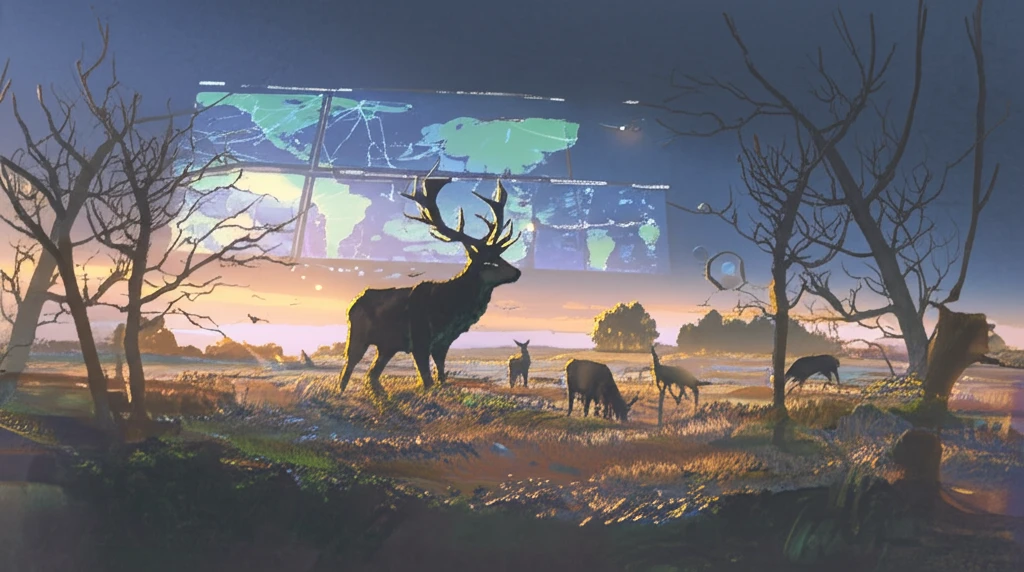
Balancing Act: How Tech and Farming Can Save Wildlife
"Discover how innovative mapping and spatial analysis are helping farmers and wildlife coexist in harmony."
The world's wildlife is in crisis. Recent reports highlight a concerning decline in global wildlife populations over the past few decades. But the story isn't the same everywhere. While some species struggle, others, like certain ungulates (hoofed mammals) are thriving, sometimes to the point of creating new problems.
In many rural areas, growing populations of ungulates such as deer and wild boar are causing headaches for farmers and landowners. These animals can damage crops and forests, leading to economic losses and increased tensions between humans and wildlife. This creates a pressing need for innovative solutions that allow both agriculture and wildlife to flourish.
Enter the world of spatial analysis and Geographic Information Systems (GIS). Researchers are now using these powerful tools to understand how ungulates interact with their environment, and how human activities influence their behavior. By mapping ungulate populations, agricultural land, and other important factors, scientists can identify areas where conflicts are likely to occur and develop strategies to mitigate them. This article explores how these innovative techniques are paving the way for a more sustainable coexistence.
Mapping the Ungulate-Human Connection

One fascinating study focused on the Mugello region of northern Tuscany, Italy. This area is a hotspot for ungulate activity, with diverse landscapes ranging from urban areas to agricultural fields and dense forests. Researchers used Geographically Weighted Regression (GWR), a sophisticated statistical technique, to analyze the relationship between ungulate populations and various environmental and human-related factors.
- Distance from artificial areas (urban zones, roads)
- Distance from agricultural activities (farms, fields)
- Ecological corridors (forested areas that allow for wildlife movement)
- Relative richness of land use (diversity of land cover types)
Toward Coexistence: A Data-Driven Approach
This research demonstrates the power of using spatial analysis and GIS to address the complex challenges of wildlife management. By understanding the factors that influence ungulate behavior and distribution, we can develop targeted strategies to minimize conflicts with human activities and promote sustainable coexistence. This could involve creating buffer zones between agricultural areas and wildlife habitats, enhancing ecological corridors to facilitate animal movement, or implementing targeted hunting programs to manage ungulate populations. The key takeaway is that data-driven decision-making is essential for creating a future where both humans and wildlife can thrive.
